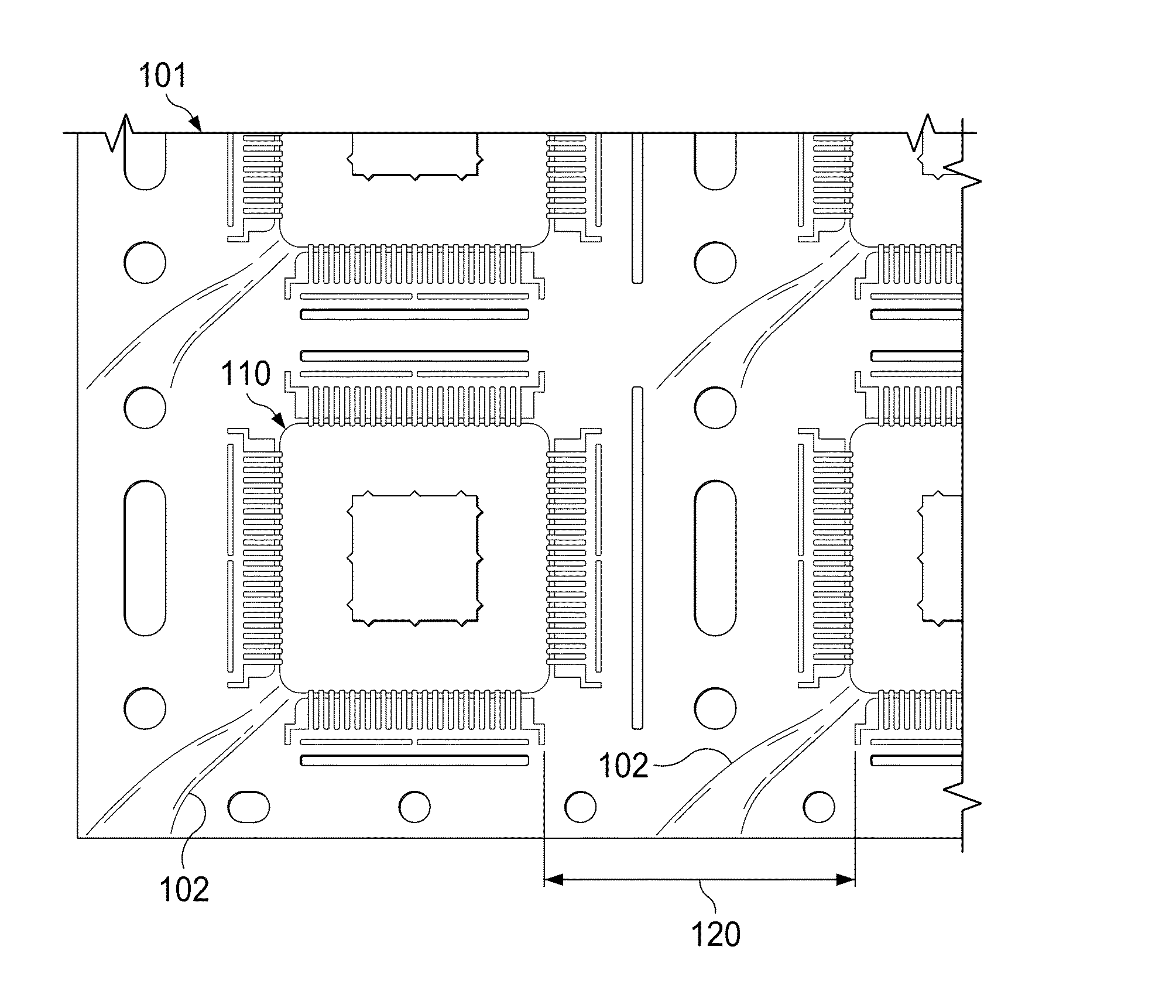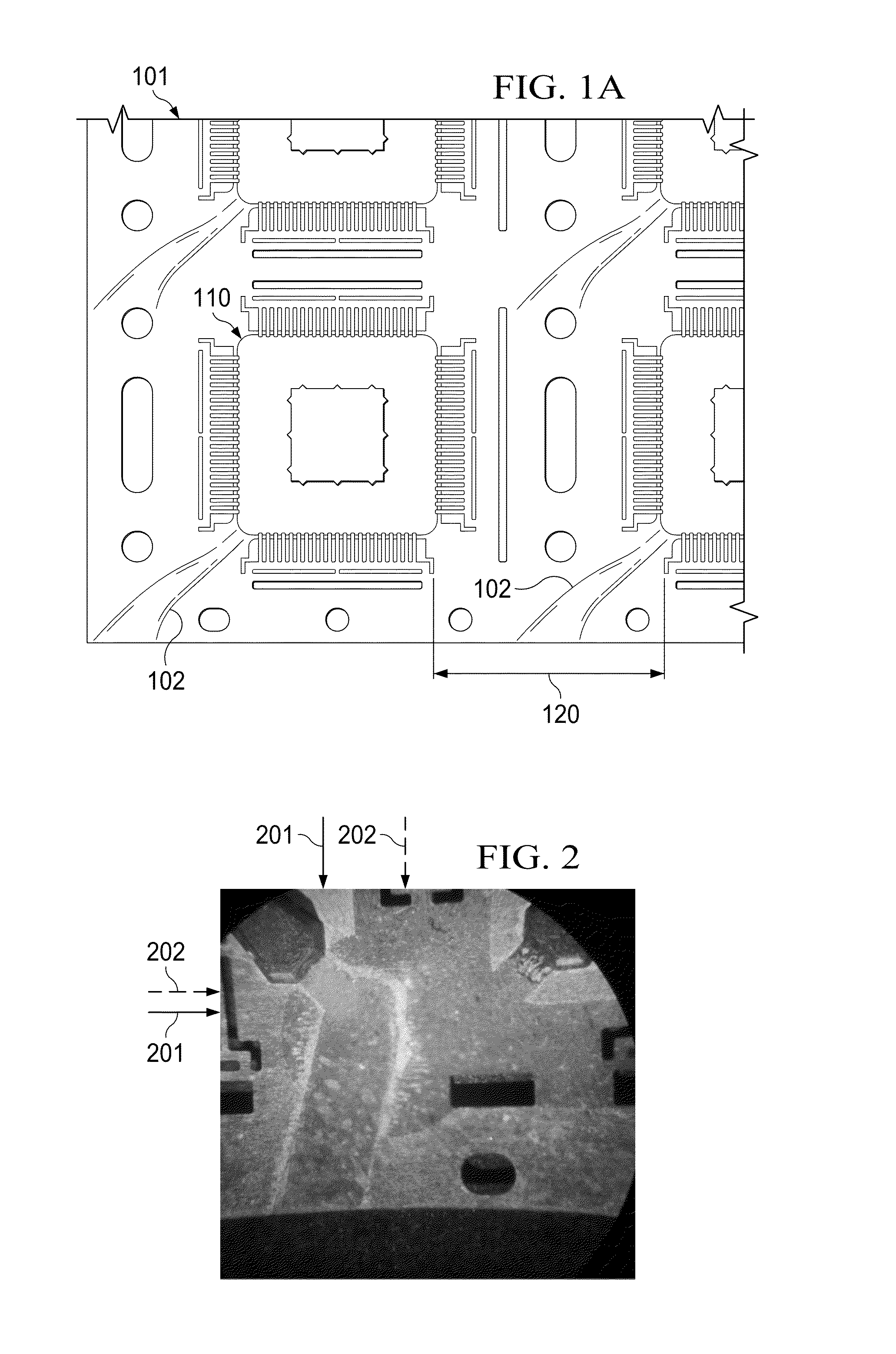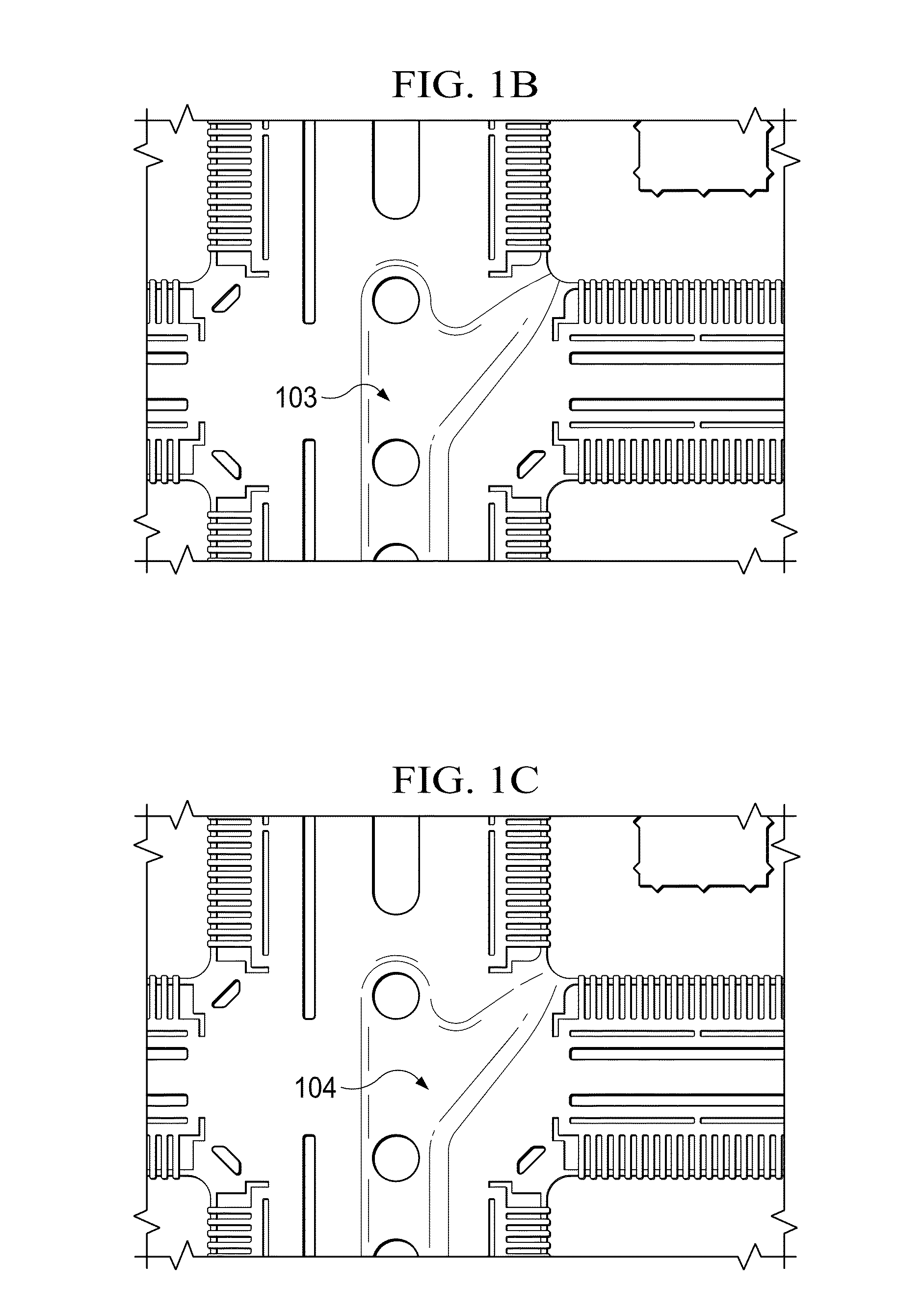Selective Leadframe Planishing
a leadframe and planishing technology, applied in the direction of semiconductor devices, line/current collector details, semiconductor/solid-state device details, etc., can solve the problems of leadframe deformation, yield loss of approximately 5%, and the difficulty of maintaining mold compound adhesion to the leadframe, etc., to achieve low manufacturing cost, increase in sensitivity, and low cost
- Summary
- Abstract
- Description
- Claims
- Application Information
AI Technical Summary
Benefits of technology
Problems solved by technology
Method used
Image
Examples
Embodiment Construction
[0028]FIG. 1A illustrates a portion of an exemplary leadframe strip 101 with molded semiconductor devices 110 after the strip has been removed from the mold press, in which the encapsulation process by molding had been completed. A leadframe strip is preferably etched or stamped from a thin sheet of base metal such as copper, copper alloy, iron-nickel alloy, aluminum, kovar™, and others, in a typical thickness range from 120 to 250 μm. The technology trend is towards thinner leadframes. As used herein, the term base metal has the connotation of starting material and does not imply a chemical characteristic.
[0029]A leadframe provides a stable support pad for firmly positioning the semiconductor chip. Further, a leadframe offers a multitude of conductive leads to bring various electrical conductors into close proximity of the chip. Any remaining gap between the tip of the leads and the chip terminals is typically bridged by thin bonding wires; alternatively, in flip-chip technology th...
PUM
| Property | Measurement | Unit |
|---|---|---|
| roughness | aaaaa | aaaaa |
| surface roughness | aaaaa | aaaaa |
| thickness | aaaaa | aaaaa |
Abstract
Description
Claims
Application Information
 Login to View More
Login to View More - R&D
- Intellectual Property
- Life Sciences
- Materials
- Tech Scout
- Unparalleled Data Quality
- Higher Quality Content
- 60% Fewer Hallucinations
Browse by: Latest US Patents, China's latest patents, Technical Efficacy Thesaurus, Application Domain, Technology Topic, Popular Technical Reports.
© 2025 PatSnap. All rights reserved.Legal|Privacy policy|Modern Slavery Act Transparency Statement|Sitemap|About US| Contact US: help@patsnap.com



